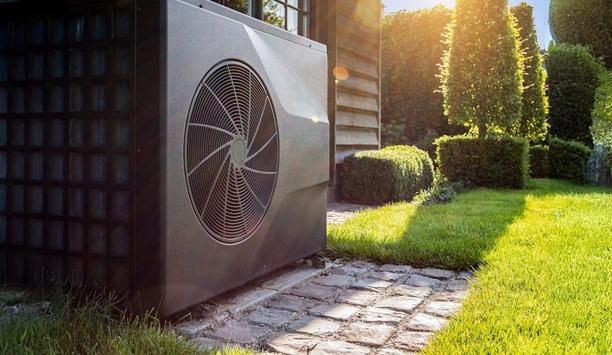By now, the HVAC industry is well versed in, and operating successfully with, various HFC refrigerant production and consumption reduction schedules put forth by regulatory bodies.
Under the EPA American Innovation and Manufacturing (AIM) Act, for example, the U.S. experienced a significant reduction (another 30%) in January 2024, advancing the goal of an 85% HFC phasedown from historic baseline levels by 2036. And the EU is working toward its stated objective of an HFC phaseout by 2050.
technology transition rules
In addition, technology transition rules are at work to limit the use of higher global warming potential (GWP) refrigerants in specific applications, ranging from commercial air conditioning to residential heat pumps. Consequently, with each passing year, the industry can expect HFC availability to feel increasingly “tighter.”
additional requirements
Once the EPA’s proposed rules become final rules, more details will be available to guide the industry
In addition, by the end of summer 2024, it’s expected that the U.S. EPA’s proposed rule, “Phasedown of Hydrofluorocarbons: Management of Certain Hydrofluorocarbons and Substitutes Under Subsection (h) of the American Innovation and Manufacturing Act of 2020” will be finalized—subjecting the HVACR industry to additional requirements.
Once the EPA’s proposed rules become final rules, more details will be available to guide the industry on steps they need to take in terms of compliance.
takeaway from HFC phasedown
The main takeaway from the progress of the HFC phasedown is that businesses at every level of the HVAC industry must employ a strong refrigerant management strategy. Several of the “Eight Rs” below represent best practices that many industry members already follow.
By structuring your strategy around these measures, you can align your business with regulations and ensure you have the resources necessary to continue servicing equipment with legacy refrigerants as well as to successfully introduce A2L solutions to customers.
Eight Rs of Refrigerant Management
Regulations
Whether you’re manufacturing, installing, or servicing equipment, keeping up to date with regulatory changes is key to compliance.
In addition, because recent and pending regulatory changes may impact both legacy and new-generation refrigerants and equipment, understanding changes offers an important tool for planning for what’s next.
Recordkeeping
Regulatory bodies conduct audits relying heavily on recordkeeping and reporting to ensure compliance
Regulatory bodies conduct audits relying heavily on recordkeeping and reporting to ensure compliance. This will mainly impact manufacturers, importers, and equipment owners.
However, accurate and consistent recordkeeping on the contractor side can prove to be incredibly beneficial to your business’s operating efficiency, bring added value to your customers, and support sustainability objectives.
Repair leaks
Practicing consistent, effective leak detection and repair is an important part of regulatory compliance that can also impact your bottom line by reducing service gas costs and keeping systems operating at peak efficiency.
In addition, it’s the first line of defense in reducing HVAC systems’ impact on the environment.
Replace equipment
As systems approach the end of their serviceable lifetime, define which new, higher-efficiency units utilizing A2L refrigerants offer the best replacements.
Remind customers of benefits such as reduced energy consumption and operating costs.
Retrofits
It may still make sense, where applicable, to perform a refrigerant conversion
If equipment is in good condition and not nearing the end of its serviceable lifetime, it may still make sense, where applicable, to perform a refrigerant conversion.
Thus allowing the equipment to operate with a more sustainable and readily available refrigerant.
Recovery
The first step in supporting refrigerant circularity is recovery, which means removing refrigerant from a system and placing it into a separate container.
During this process, it’s important to maintain the refrigerant’s value/purity as much as possible by not mixing gases.
Reuse/Recycle
This means returning recovered refrigerant to the same system or another system with common ownership.
Removing oil, moisture, or other contaminants via minor “cleanup” or filtering of the recovered gas may be part of the process.
Reclamation
HFC phasedown and the transition to A2L refrigerants will continue to impact the operations of HVAC contractors
Reprocessing recovered refrigerant to meet virgin purity specifications allows it to be reintroduced commercially for industry use and is becoming increasingly important in ensuring ample legacy refrigerant supply exists to meet current servicing needs. In the U.S., reclamation must be performed by EPA-certified reclaimers.
Whether it’s through new regulations or processes and requirements already underway, the HFC phasedown and the transition to A2L refrigerants will continue to impact the operations of HVAC contractors, equipment owners/operators, OEMs, equipment sellers/distributors, and others.
A2L transition
Implementing a solid refrigerant management strategy built around the Eight Rs can help you consistently and effectively stay updated on regulations, take steps to remain compliant, and contribute to industry efforts to mitigate global warming.
In addition, following the Eight Rs can keep your company ahead of continued HFC phasedowns, aligned with the A2L transition, and in a strong position to both maintain your legacy refrigerant business and possibly expand your customer base through new-generation solutions.





















